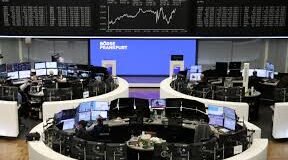
The World Bank has lowered its forecast for Bangladesh’s economic growth for fiscal 2022-23 by a 0.6 percentage point to 6.1 per cent.
While economic distress is weighing down all South Asian countries, some are coping better than others, the World Bank said in a new report released on Thursday. Bangladesh is one of them.
The World Bank cut its forecast for India’s economic growth by a full percentage point to 6.5 per cent for fiscal 2022-23, according to bdnews24.com
Beset with Sri Lanka’s economic crisis, Pakistan’s catastrophic floods, a global slowdown, and the impacts of the war in Ukraine, South Asia faces an unprecedented combination of shocks on top of the lingering scars of the Covid-19 pandemic.
“Growth in the region is dampening,” the World Bank said in its twice-a-year update, underscoring the need for countries to build resilience.
Exports and the services sector in India, the region’s largest economy, have recovered more strongly than the world average, while its ample foreign reserves served as a buffer to external shocks.
Amid increasing balance of payments pressure and a fall in foreign exchange reserves, Bangladesh requested financial support from the International Monetary Fund in July, making it the third country in the region — after Pakistan and Sri Lanka — to engage with the IMF this year.
“But unlike the other two countries, Bangladesh’s reserves have not fallen to dangerously low levels, the country is not facing political instability, and inflation is still below 10 per cent although it is above recent historical levels,” the World Bank said.
During the most recent dollar rally, as the euro also depreciated against the dollar, European consumers face higher euro prices of imports from Bangladesh, because the bilateral trade is invoiced in the US dollar and the dollar prices are sticky in the short term.
As a result, Bangladesh exporters do not benefit from the taka depreciation against the dollar.
“Pandemics, sudden swings in global liquidity and commodity prices, and extreme weather disasters were once tail-end risks. But all three have arrived in rapid succession over the past two years and are testing South Asia’s economies,” said Martin Raiser, the World Bank’s vice president for South Asia. “In the face of these shocks, countries need to build stronger fiscal and monetary buffers, and reorient scarce resources towards strengthening resilience to protect their people.”
Inflation in South Asia, caused by elevated global food and energy prices and trade restrictions that worsened food insecurity in the region, is expected to rise to 9.2 per cent this year before gradually subsiding.
“The resulting squeeze on real income is severe, particularly for the region’s poor who spend a large share of their income on food,” the World Bank said.
South Asia’s migrant workers, many of whom are employed in the informal sector, were disproportionately affected when restrictions on movement were imposed during Covid-19.
However, the later phase of the pandemic has highlighted the crucial role migration can play in facilitating recovery.
Survey data from the report suggests that in late 2021 and early 2022, migration flows are associated with movement from areas hit hard by the pandemic to those that were not, thus helping equilibrate demand and supply of labour in the aftermath of the Covid-19 shock.
 Weekly Bangla Mirror | Bangla Mirror, Bangladeshi news in UK, bangla mirror news
Weekly Bangla Mirror | Bangla Mirror, Bangladeshi news in UK, bangla mirror news







